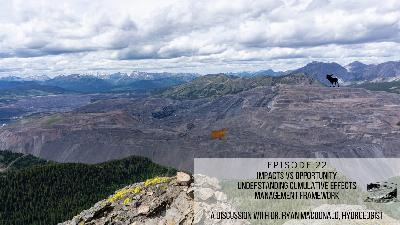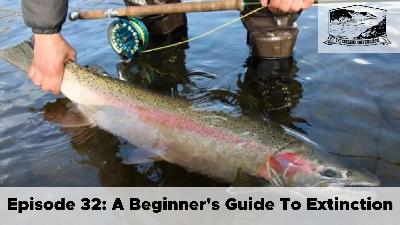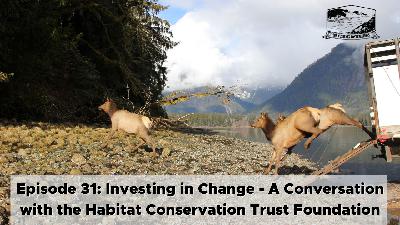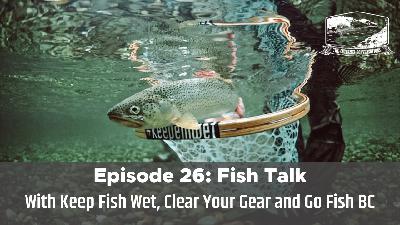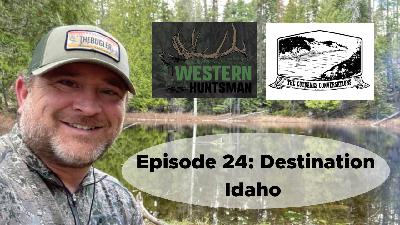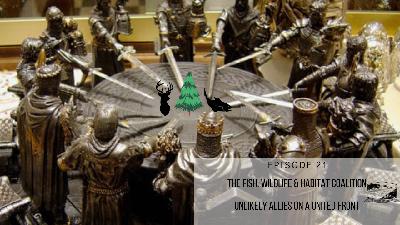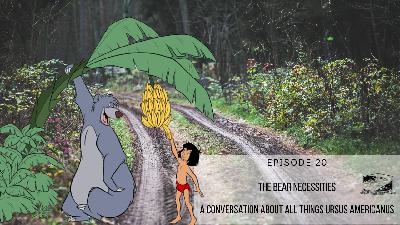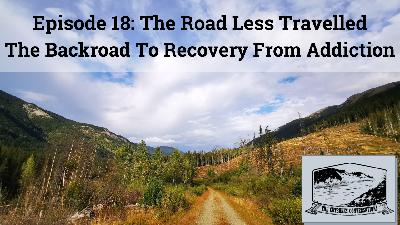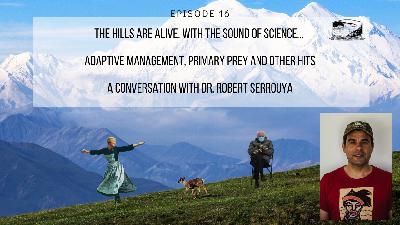 Episode 22: Impacts vs Opportunity –Cumulative Effects Management Framework a discussion with Dr. Ryan Macdonald Hydrologist
Episode 22: Impacts vs Opportunity –Cumulative Effects Management Framework a discussion with Dr. Ryan Macdonald Hydrologist
Update: 2021-04-15
Description
The Cutbanks Conversations Episode 22: Impacts vs Opportunity –Cumulative Effects Management Framework a discussion with Dr. Ryan Macdonald Hydrologist
Guest: Dr Ryan Macdonald, P.H.D. Hyrdology
Hosts: Mike Morris M.L.A, Dustin Snyder, Steve Hamilton and Don Willimont
Produced by: Matthew Wakeham
What is Cumulative Effects Management Framework: Defining the process and how and why it was developed. How CEMF applied to projects or permitting in resource extraction and development.
What is the scope of the risks and outcomes it models for?
What timeline is applied to the model? Does it look forward in time or does it take a historical data? What are the challenges with CEMF?
Using the Elk River Valley area and the multiple assessments as a sample, we look at how CEMF is applied and what were the potential outcomes to the land-base, watershed and wildlife in the area. A look at riparian/watershed impacts for cutthroat trout, mature and old growth forest, grizzly bear and big horn sheep habitat.
Teck Coal – Selenium levels and impacts on Trout – Lake Koocanusa Montana and the Flathead watershed impacts.
Road Density – Hydrological Impacts – lets look at the impacts of road density across a broader scale than just this study area.
Mike Morris offers some insight into Sustainable Yield practices in forestry and the impacts they are having on wildlife.
What is the uptake by government from these assessments? Does it cause course corrections at a land level? Does it inform or influence broad scale policy considerations?
What are the deficits in this kind of modelling? Do you see opportunity to improve the review and land-use planning functions for which these study’s are intended?
If you would like more information on how to help or become a member please visit Spruce City Wildlife Association on Facebook or Online (https://scwa.bc.ca/) to learn more
Join the Conversation with us on Facebook!
Guest: Dr Ryan Macdonald, P.H.D. Hyrdology
Hosts: Mike Morris M.L.A, Dustin Snyder, Steve Hamilton and Don Willimont
Produced by: Matthew Wakeham
What is Cumulative Effects Management Framework: Defining the process and how and why it was developed. How CEMF applied to projects or permitting in resource extraction and development.
What is the scope of the risks and outcomes it models for?
What timeline is applied to the model? Does it look forward in time or does it take a historical data? What are the challenges with CEMF?
Using the Elk River Valley area and the multiple assessments as a sample, we look at how CEMF is applied and what were the potential outcomes to the land-base, watershed and wildlife in the area. A look at riparian/watershed impacts for cutthroat trout, mature and old growth forest, grizzly bear and big horn sheep habitat.
Teck Coal – Selenium levels and impacts on Trout – Lake Koocanusa Montana and the Flathead watershed impacts.
Road Density – Hydrological Impacts – lets look at the impacts of road density across a broader scale than just this study area.
Mike Morris offers some insight into Sustainable Yield practices in forestry and the impacts they are having on wildlife.
What is the uptake by government from these assessments? Does it cause course corrections at a land level? Does it inform or influence broad scale policy considerations?
What are the deficits in this kind of modelling? Do you see opportunity to improve the review and land-use planning functions for which these study’s are intended?
If you would like more information on how to help or become a member please visit Spruce City Wildlife Association on Facebook or Online (https://scwa.bc.ca/) to learn more
Join the Conversation with us on Facebook!
Comments
In Channel

